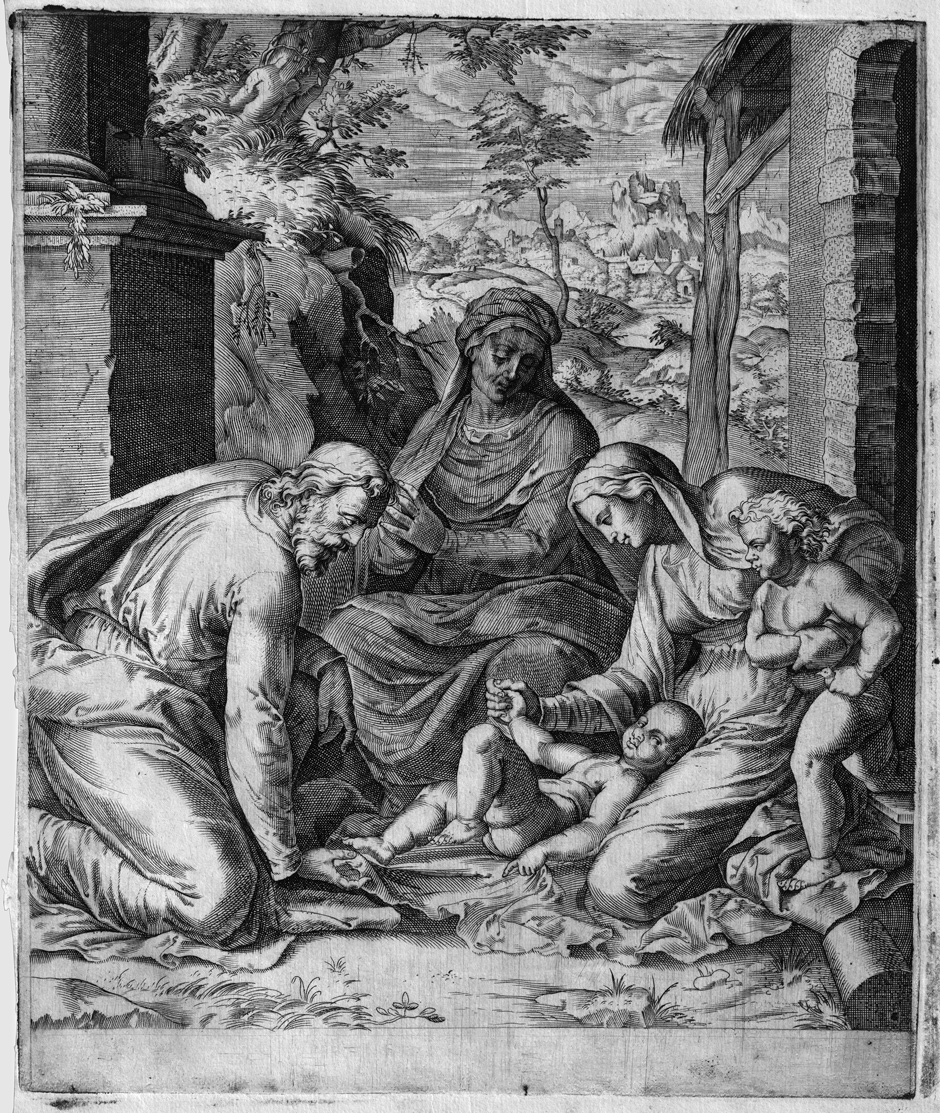Loading the page ...
Cornelis Cort
(1533 Hoorn or Edam – 1578 Rome)
The Holy Family with St. Anne and John the Baptist. Engraving after Federico Zuccaro. 28 x 23.4 cm. Circa 1570. Bierens de Haan 48, The New Hollstein 87 before I (of II).
Cornelis Cort was indisputably one of the most eminent and influential reproductive engravers of the 16th century. His mastery of the craft set enduring standards of quality which were to leave their mark on the later development of engraving in the Netherlands and Italy. The large number of editions and copies testify to the popularity of his printed work. Cort’s prestige as an engraver was so great that Titian sought him out as a collaborator and in 1565/66 commissioned the artist to execute reproductive engravings after some of his paintings. From 1566 onwards Cort lived in Rome, where he worked for well-known publishers such as Antonio Lafreri and Antonio Salamanca. Artists whose works he engraved include Federico Barocci, the Zuccaro brothers and Girolamo Muziano. In other words, while in Venice and Rome Cort moved in the circles of the greatest artists of his day.
The present engraving is a highly characteristic example of Cort’s Roman period. The concentrated, sculpture-like composition emanates grandeur and elegance and is based on an invention by Federico Zuccaro, who at the time ranked among the leading artists active in Rome. Using a deft and powerful engraving technique, Cort has convincingly translated Zuccaro’s original into the black-and-white medium. He has done so unobtrusively, however, without trying to impose his own personal stamp on the original. The dense, richly modulated hatching patterns create striking chiaroscuro effects, which heighten the emotional pathos and the visual appeal of the scene. This engraving must have enjoyed great popularity, as at least three copies are known to exist, one of which is by Cherubino Alberti.
A superb, rich and contrasting impression unknown in this form to the authors of the New Hollstein. An impression from the uncleaned plate with numerous wiping marks, the platemark distinct and inky and with numerous traces of printer’s ink in the white margin, which is of varying width on three sides and trimmed to the platemark on the left. Before the artist’s signature, before the date and the address of Lafreri. This is in all likelihood a unique specimen, the first state being extremely rare. The New Hollstein records a total of five impressions of the first state: in Berlin (lost in the war), Brussels, Cambridge, El Escorial, Munich and Vienna. Minor staining, otherwise in very good condition and of great, authentic expressiveness.
